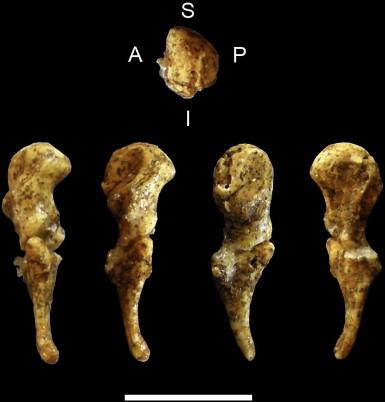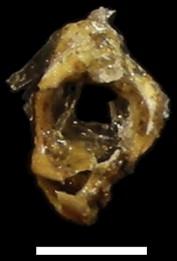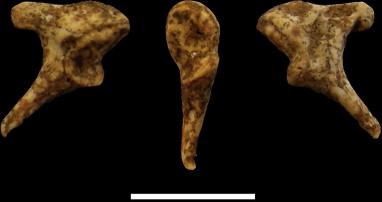Reassessment of the La Ferrassie 3 Neandertal ossicular chain
Rolf Quam | Ignacio Martínez | Juan Luis Arsuaga
Source - http://www.journals.elsevier.com/journal-of-human-evolution/recent-articles/
Journal of Human Evolution
Abstract: The ossicular chain in La Ferrassie 3 was briefly described in the monograph on the La Ferrassie Neandertal children, but to date has not been the subject of detailed study. We provide new data on these important fossils and re-examine some previous suggestions of derived Neandertal features in the middle ear ossicles based on more limited evidence. The malleus shows a curved lateral margin of the manubrium and a relatively large head. The incus shows a tall articular facet, a depressed area on the medial surface of the body, a straight anterior border of the long process and a more closed angle between the processes. The stapes shows an asymmetrical configuration of the crura, with an anteriorly skewed head, and generally small dimensions, including a smaller and relatively wider stapedial footplate. These same features can also be seen in the few other Neandertal ear ossicles known, suggesting that a consistent anatomical pattern characterizes the Neandertal ossicular chain. While the phylogenetic polarity of many of these features remains to be clarified, the asymmetrical stapes and anteriorly skewed stapedial head appear to be derived Neandertal features. In addition, while the larger malleus head and incus articular facet in La Ferrassie 3 might reflect larger body mass in Neandertals, the larger stapes footplates in Homo sapiens cannot be explained by changes in body mass. Indeed, H. sapiens seems to depart from the general mammalian pattern in combining an increase in stapes footplate size with a decrease in body mass. Although the malleus/incus lever ratio in La Ferrassie 3 is similar to that in H. sapiens, Neandertals appear to be characterized by a slightly different spatial relationship and articulation of the ossicular chain within the tympanic cavity. While only limited inferences can be drawn regarding hearing ability based on the ossicles, the few physiologically relevant dimensions in the La Ferrassie 3 ear bones are similar to H. sapiens.

Figure 1. The LF3 malleus. The bone appears to be complete, but the two major fragments are incorrectly aligned, prohibiting a standard view of the bone. The view on the far left corresponds approximately to the view published by Heim (1982). The other three views show slightly different orientations of the bone. Note the curvature of the lateral surface of the manubrium. Scale bar = 5 mm.

Figure 2. The LF3 stapes. Despite some damage, the asymmetrical configuration of the crura and anteriorly skewed orientation of the head can be appreciated. Scale bar = 2 mm.

Figure 3. The LF3 incus in (from left to right) lateral, anterior and medial views. Note the closed angle between the processes, a depression on the medial surface of the body and the presence of a notch in the inferior margin of the short process. Scale bar = 5 mm.